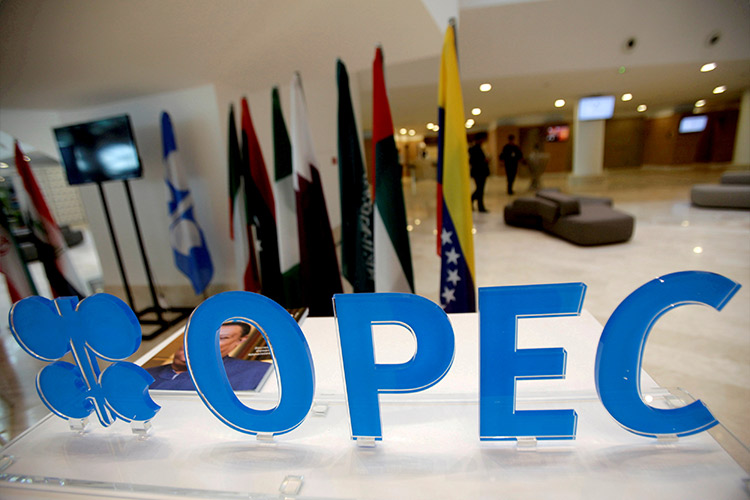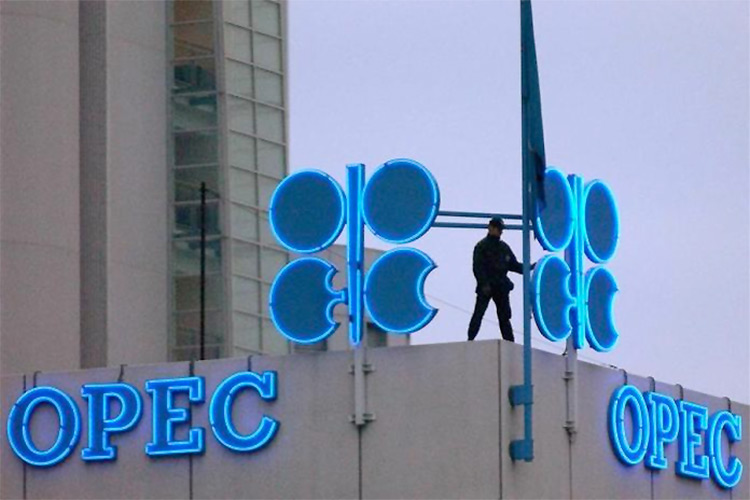Opec cuts oil demand outlook, building case to keep supply curbs

Top officials attend the launch ceremony of Shanghai›s Nasdaq-style tech board, STAR Market, in Shanghai, China, on Thursday. Reuters
The producer group and its allies meet in the coming weeks to decide whether to maintain supply curbs. Some members are worried about a steep slide in prices, despite demands from US President Donald Trump for action to lower the cost of oil.
World oil demand will rise by 1.14 million barrels per day (bpd) this year, 70,000 bpd less than previously expected, the Organization of the Petroleum Exporting Countries said in a monthly report published on Thursday.
«Throughout the first half of this year, ongoing global trade tensions have escalated,» Opec said in the report. «Significant downside risks from escalating trade disputes spilling over to global demand growth remain.» Opec, Russia and other producers have since Jan. 1 implemented a deal to cut output by 1.2 million bpd. The alliance, known as Opec+, is due to meet on June 25-26 or in early July to decide whether to extend the pact.
Despite the supply cut, oil has tumbled to $62 a barrel from April›s 2019 peak above $75, pressured by concern over the US-China trade dispute and an economic slowdown, though prices jumped 4% on Thursday after suspected attacks on two oil tankers in the Gulf of Oman.
In addition to lowering its demand forecast, Opec said oil inventories in developed economies rose in April, suggesting a trend that could raise concern over a possible oil glut.
Stocks in April exceeded the five-year average - a yardstick Opec watches closely - by 7.6 million barrels.
Still, the report implies that Opec will under-supply the market in 2019, even with the weaker demand outlook.
Oil futures jumped on Thursday after suspected attacks on two tankers off the coast of Iran, while US Treasury yields edged lower as economic data seemed to strengthen the case for the Federal Reserve to cut interest rates this year.
Wall Street›s major stock indexes climbed after falling for two days as investors regained their appetite for risk assets.
The number of Americans filing applications for unemployment benefits unexpectedly rose last week, potentially adding to concerns about the US labour market after May job growth slowed.
And other data showed import prices fell by the most in five months in May in the latest indication of muted inflation pressures, potentially strengthening the case for the Federal Reserve to cut interest rates this year.
But Randy Frederick, vice president of trading and derivatives for Charles Schwab in Austin, Texas was not convinced the data changed anything.
«I don›t see a whole lot of real positive catalysts other than a small bounce because we got a couple of weak days,» said Frederick. «Generally, when you get a bounce that doesn›t seem to have a catalyst, often it doesn›t last. I›m finding it hard to imagine what optimism might be out there right now.» The Dow Jones Industrial Average rose 52.6 points, or 0.2%, to 26,057.43, the S&P 500 gained 7.71 points, or 0.27%, to 2,887.55 and the Nasdaq Composite added 34.99 points, or 0.45%, to 7,827.71.
The pan-European STOXX 600 index rose 0.14% and MSCI›s gauge of stocks across the globe shed 0.01%.
After falling hard on Wednesday, oil futures rebounded sharply after news of a suspected attack on two tankers in the Gulf of Oman near Iran and the Strait of Hormuz, through which a fifth of global oil consumption passes.
«Whenever you have an incident in the Arabian Gulf, a little bit of nervousness always starts to kick in about that particular artery getting clogged up,» CMC Markets senior analyst Michael Hewson said.
US crude rose 2.97% to $52.66 per barrel, recouping much of the previous day›s 4% drop. Brent was up 2.7% at $61.57.
In US Treasuries, the yield curve steepened after the import prices spurred bets for a Fed rate cut this year, days ahead the US central bank›s scheduled meeting.
Benchmark 10-year notes last rose 8/32 in price to yield 2.1014%, from 2.127% late on Wednesday.
In currencies, the US dollar was little changed against the euro as investors were reluctant to take large positions before next week’s Federal Reserve meeting and the G20 summit in Japan later this month.
«I think in order to see the dollar weaken further, you need to see some follow through from the Fed on rate easing,” said Mazen Issa, senior FX strategist at TD Securities in New York.
The dollar index, tracking it against six major currencies, rose 0.04%, with the euro down 0.12% to $1.1274.
The Japanese yen strengthened 0.08% versus the greenback to 108.44 per dollar, while sterling was last trading at $1.2683, down 0.02% on the day.
The pound was subdued after British lawmakers defeated an attempt led by the opposition Labour Party to try to block a no-deal Brexit by seizing control of the parliamentary agenda from the government.
Gold prices edged up to the week›s high on Thursday, on expectations for a US rate cut after soft inflation data, although the uptick in equities capped gains.
Reuters







